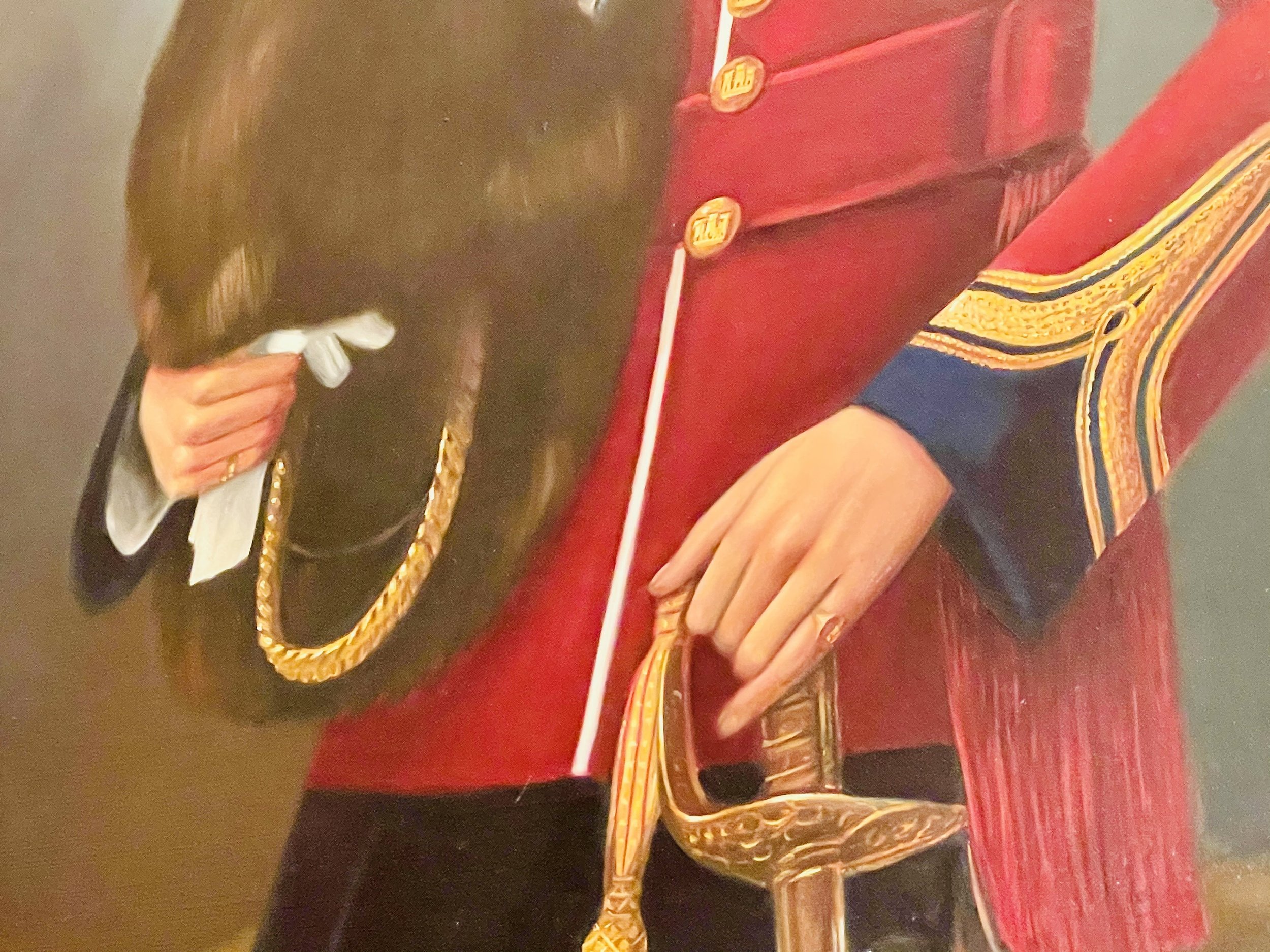My grandfather, Major John Johnston Kirkpatrick, attended the Royal Military Academy at Sandhurst in England and served the British military in Tientsin, China. He was an avid horseman and polo player. He is wearing the Kirkpatrick crest ring on his left hand. While there, he met my Austrian grandmother. Her father was a diplomat advising the Empress Dowager in The Forbidden City.
While visiting Foxcroft School for Girls in Middleburg, Virginia with my husband, I had a flashback to my wedding. My bridesmaid, Lucy Brown, who had attended Foxcroft, asked me a week before my wedding if I had chosen a wedding band for Stuart. “A wedding band?” I asked. “Do I need one?” “Well,” she answered, “Does HIS father wear one?” He did. That answered that!
My British father never wore a wedding band; he only wore a family crest ring on his left pinky. The thought of a wedding band had never crossed my mind… call me naive! I quickly visited a jewelry store in Richmond to purchase a wedding band. Thankfully, it fit!
What is a crest or signet ring?
Both are the same: a gold ring engraved with a coat of arms. My father, brother, and my father’s British brother, all wore the same traditional, oval-faced ring with the Kirkpatrick coat of arms on their left pinky finger. It has been a family tradition and I, too, wear one because my beloved father died when I was sixteen and it reminds me of him.
What is the history of this type of ring?
Various forms of signet rings have been worn since 3400 BC. In medieval times, members of the nobility used them to “impress upon wax to create a seal” on letters and to mark essential documents. In the 14th century, official documents were required to have the wax seal of the King’s ring. It was considered more official than a signature … or a notary public embossed seal today.
Why is a crest ring also referred to as a “gentleman’s ring?”
People of influence and noblemen have worn them for centuries and they have been used to establish lineage and social standing. Crest rings are typically engraved with the family crest, not the entire coat of arms or armorial shield. European aristocratic families continue to wear their inherited rings.
The family ring has only the "crest," not the entire shield or "coat of arms."
Any additional signet ring lore?
Prince Charles’ signet ring is worn on his left pinky finger, whilst Sir Winston Churchill wore one on his right hand. A subscriber, Alison, from Austin, Texas shared this with me:
“Edward VIII wanted to break tradition. He wore his signet ring in “the continental way,” to be different. The British wear the ring's seal inward, whereas the Europeans wear it outwardly. It was arriviste of the Prince to wear it in the continental style as no British gentleman would ever have done this!” ~The Real Wallis Simpson by Anna Pasternack
A portion of the Kirkpatrick coat of arms, depicted on my family crest ring, is a hand with a dagger and three drops of blood. The clan motto for the coat of arms is, “I mak sikkar,” meaning, “I make sure.” During the Scottish Wars of Independence, Kirkpatrick drew his dagger to assist Robert the Bruce and said these words. The main historic seat of Kirkpatrick is Closeburn Castle, in the late 1300s.
Forbidden Faux Pas:
No-no: To wear a “faux or imposter” crest ring that does not belong to your family lineage.
What is done: To design a crest ring with your monogram, or wear one with the seal of a society you belong to, a college, a club, or something of significance to you, thus making the ring an authentic representation of you.
I cherish the family history attached to my crest ring. When you meet someone wearing one, realize that it is a peek into their past; there is a secret story quietly hidden within the engraving. Inquire about it. Surely, a clever conversation will ensue!
Happy Fourth of July and God Bless America!
Xx
Holly
PS Take a peek at my splendid sponsors! I hope you’ll inspire just ONE friend to subscribe today, and please help me spread the word about my “Equestrian Collection” porcelain.



